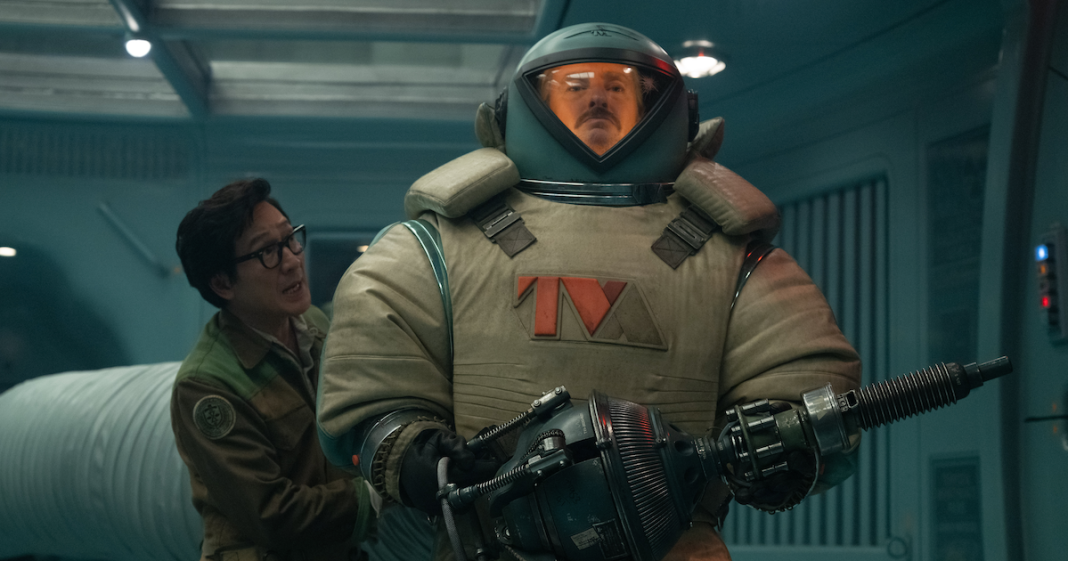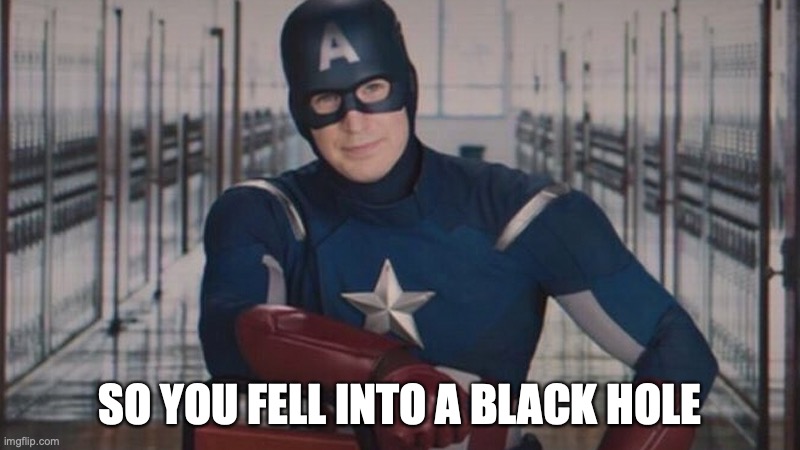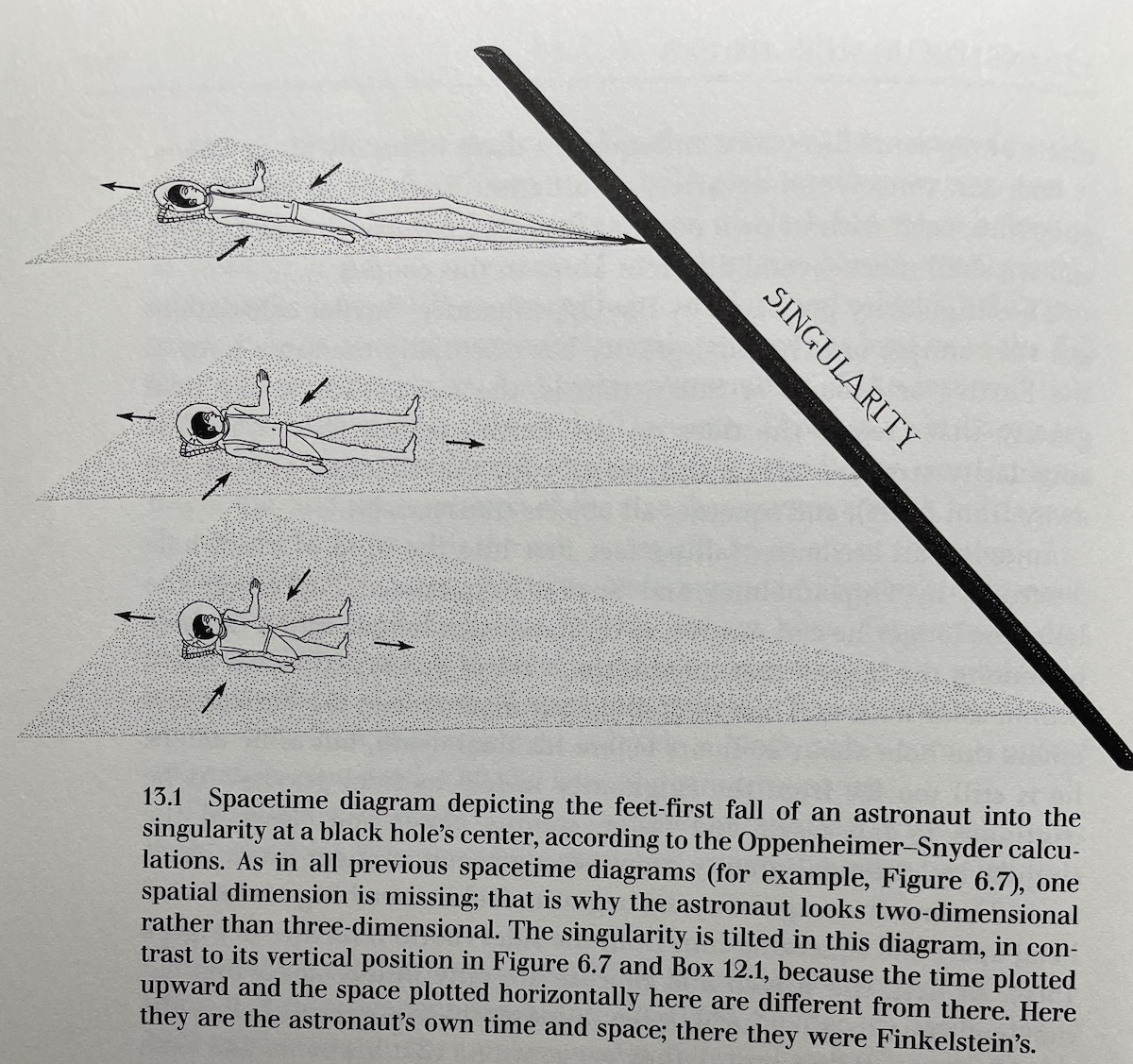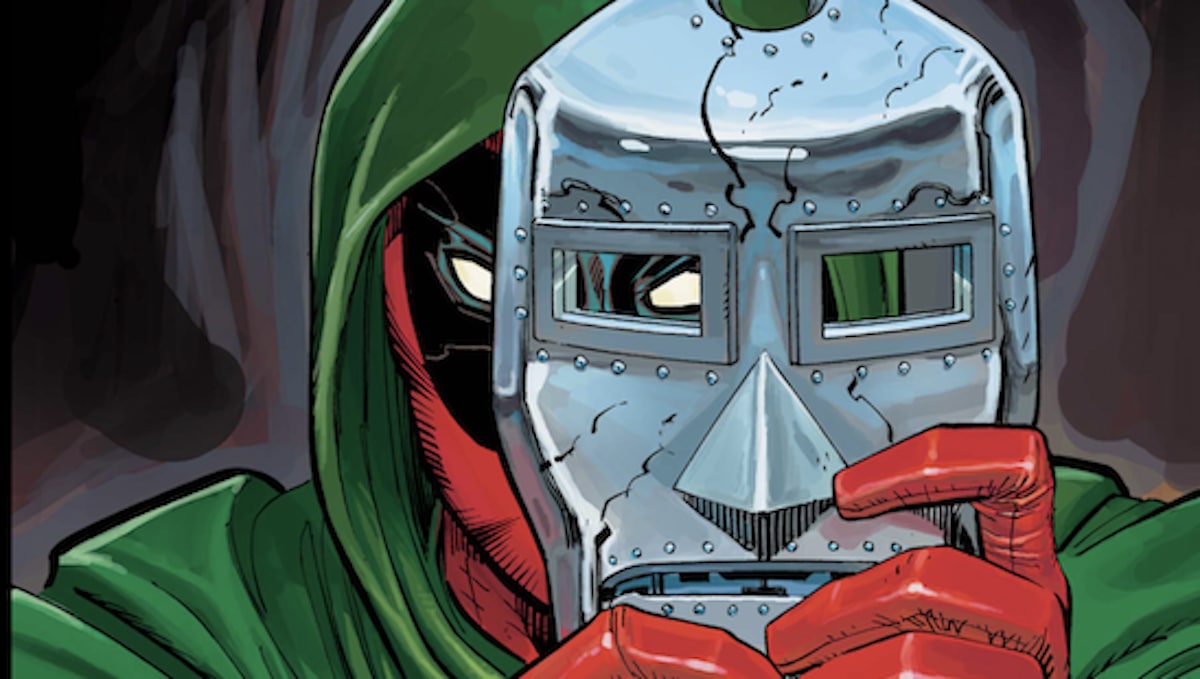This article contains mild spoilers for Loki season 2 episode 1.
In the first episode of Loki season 2, “Ouroboros,” now available for streaming on Disney+, viewers are introduced to another member of the Time Variance Authority: OB (Ke Huy Quan). As OB explains to Loki (Tom Hiddleston) how to use the Temporal Extractor, he asks, “Have you heard about how if you fall into a black hole, you turn into spaghetti?”
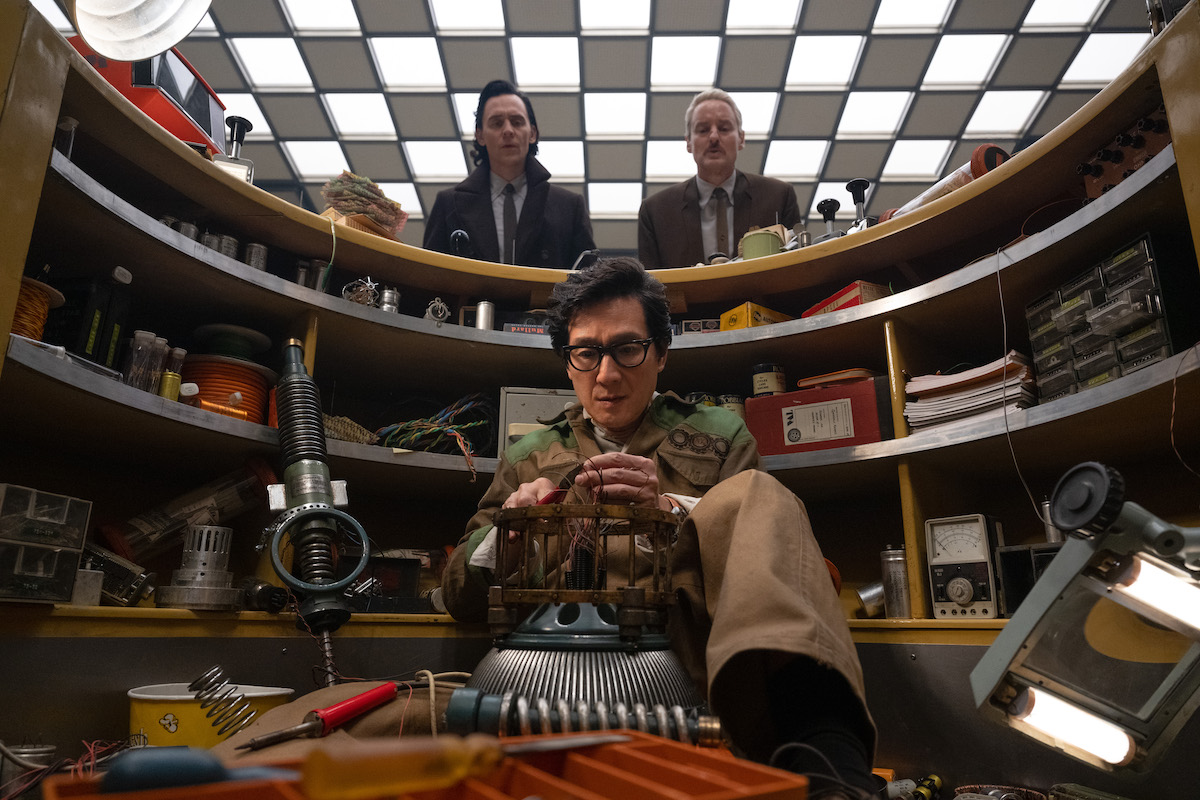
What did OB mean by this remark? It turns out there’s an actual explanation. Today, The Beat investigates what happens when you fall into a black hole. Spoiler alert: “spaghetti” is right!
Black Holes and Time Warps
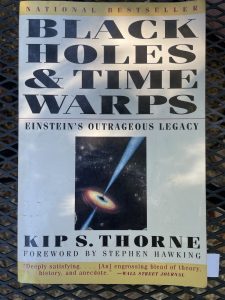
But first, let’s define “tidal force.” On Earth, the ocean is pulled more strongly on the side of the planet which is facing the moon. This causes the water on this side to bulge outwards toward the moon. Meanwhile, the oceans on the opposite side of the Earth and not pulled so strongly by the moon’s gravitational forces. This causes water on the opposite side to bulge outwards away from the moon. As a result, the Earth has two bulges, both caused by the moon’s gravity. In honor of the Earth’s oceans, this phenomenon is called “tidal force.” It describes the difference in the strength of gravity between two points.
According to Albert Einstein, tidal gravity is “a manifestation of spacetime curvature.” Thorne illustrates this point using a thought experiment. If two balls (with the special power of falling through dirt and rock without slowing) could be dropped into the center of the Earth, you would see that “Earth’s tidal gravity squeezes them together in the same way as it squeezes your sides if you are a falling astronaut.” While the balls were first falling in a straight line, the curvature of spacetime means that they would arrive at the same point when the reached the center of the Earth.
Inside Black Holes
In chapter 13, the effects of falling feet first into a black hole are examined directly. The thought experiment uses a hypothetical black hole like the one described by J. Robert Oppenheimer and Harland Snyder‘s equations, one with a mass of 10 billion solar masses. This is the size of the largest black holes found in the cores of quasars. These large black holes give us “maximum longevity” for our doomed hypothetical astronaut.
According to Black Holes and Time Warps:
“[T]he falling astronaut enters the hole about 20 hours before his final death, but as he enters, he is still too far from the singularity to feel its tidal gravity. As he continues to fall faster and faster, coming closer and closer to the singularity, the tidal gravity grows stronger and stronger until, just 1 second before the singularity, he begins to feel it stretching his feet and head apart and squeezing him from the sides (Figure 13.1).”
While the stretch will begin as a mild annoyance, as the astronaut continues closer to the singularity, the effects worsen. A “few hundredths of a second before the singularity, [tidal forces] get so strong that his bones and flesh can no longer resist. His body comes apart and he dies.”
Although that already seems bad enough, the details might be worse:
“[A]s the astronaut’s body reaches the singularity, it gets stretched out to truly infinite length and squashed transversely to truly zero size. The extreme curvature of space near the singularity permits him to become infinitely long without shoving his head out through the hole’s horizon. His head and feet are both pulled into the singularity, but they are pulled in infinitely far apart.”
Furthermore,
“[A]ll forms of matter are infinitely stretched and squeezed — even an individual atom; even the electrons, protons, and neutrons that make up atoms, even the quarks that make up protons and neutrons.”
Yikes!
What happens in Cygnus X-1 stays in Cygnus X-1
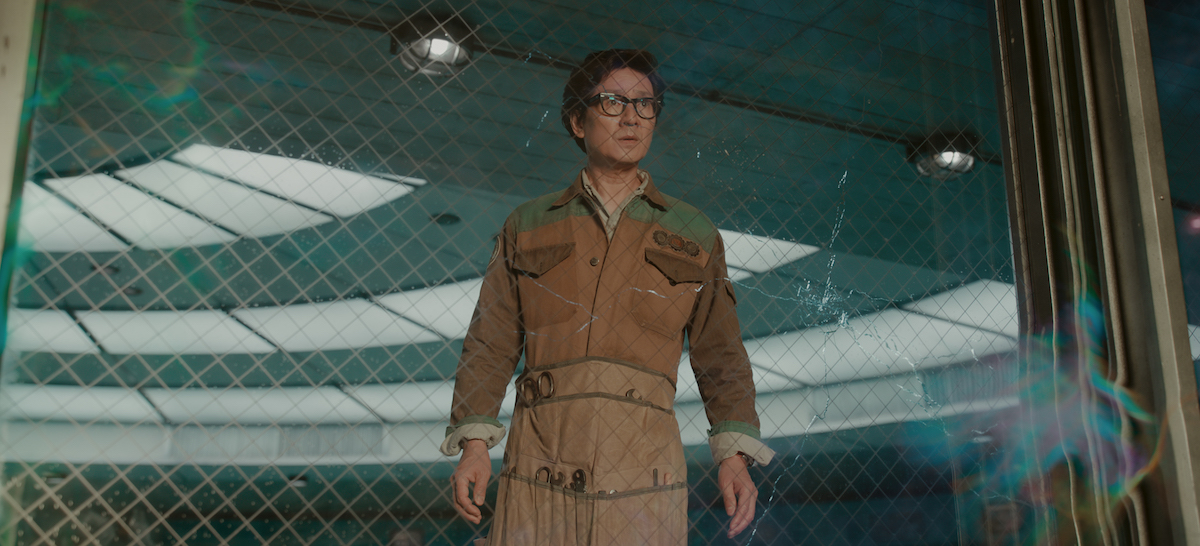
Note that the only solution to this problem is to avoid the black hole altogether. According to Black Holes and Time Warps, once an astronaut has crossed the black hole’s horizon, there is no turning back.
There is a reason for this. “Everywhere inside the horizon, according to the Oppenheimer-Snyder equations, gravity is so strong (spacetime is so strongly warped) that time itself (everyone’s time) flows into the singularity. Since the astronaut, like anyone else, must move inexorably forward in time, he is driven with the flow of time into the singularity.”
You know. For all time. Always.
The first episode of Loki season 2 is now available for streaming on Disney+.
Keep up with all of The Beat’s Loki coverage by clicking here.


